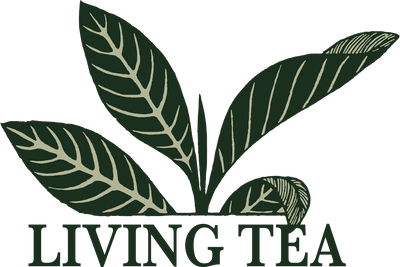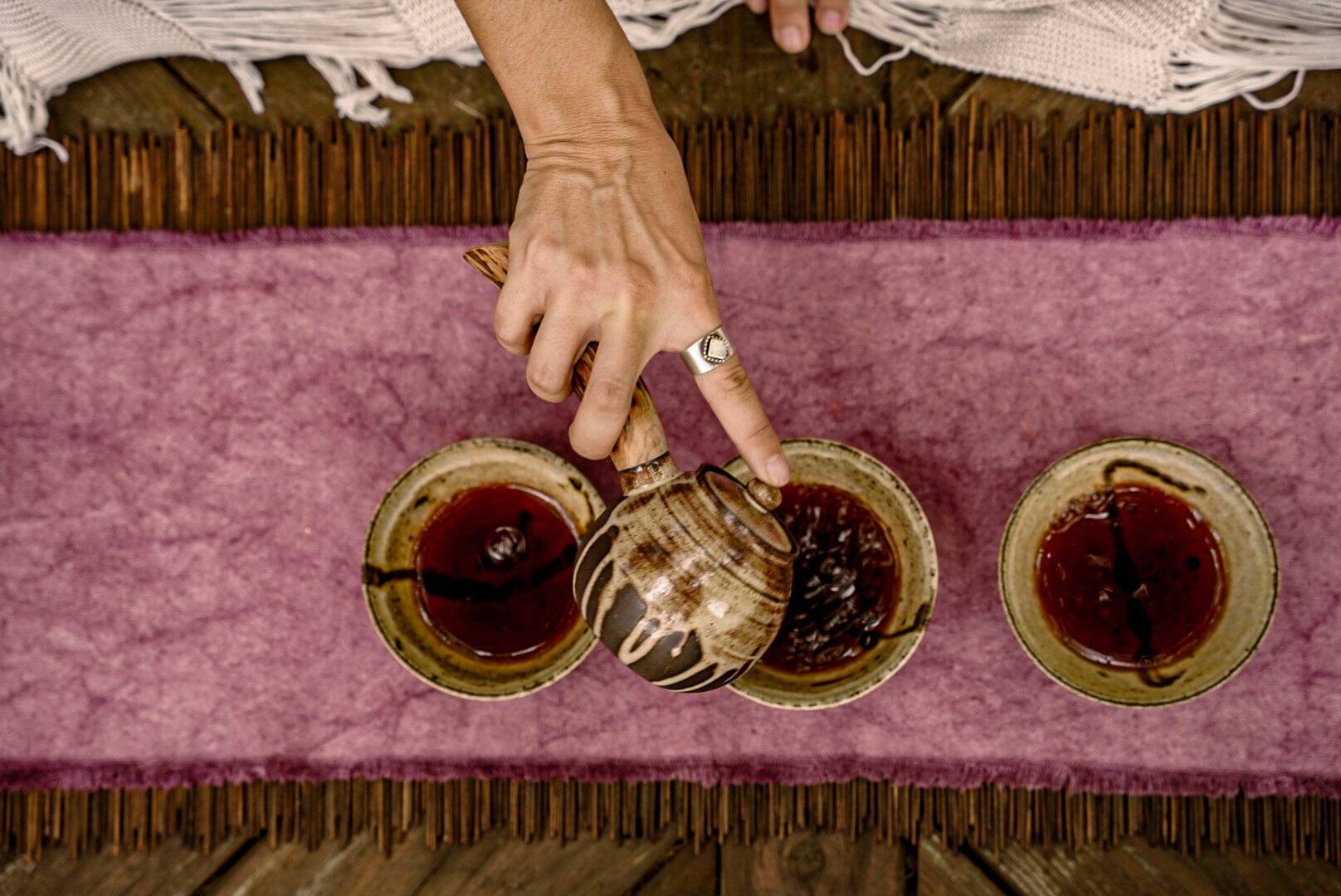As we transition from summer to fall, the strong billowing yang exhalation of life within nature transitions towards a steady slow inhalation. The trees, bushes, and grasses gently transform into moody panoplies of orange, red, yellow, russet, brown, and magenta. Seeds harden, sap drops, heavy ripe fruit falls, flowers droop and wither. The rains descend, often through majestic clear Autumnal light, mirroring heightened emotions as we process the experiences from increased summer passions, projects, and movement. Stronger winds scatter seeds as well as thoughts, symbolized by air, as we reflect on what we must let go of from the summer.
Wind has a drying nature, and the earth becomes cool and contracted, drawing inward for accumulation and storage. During this time, we can look to principles derived from nature to help guide our lives. Autumn is a time for purifying ourselves by gathering what is essential. Just as we harvest grains, separating the wheat from the chaff, so too might we let go of summer excesses, keeping only what is essential. Animals hunt ceaselessly, storing fat for heat and sustenance during the colder months, preparing to burrow into the earth. Flocks of migrating birds head for warmer lands as we gather fallen branches and wood for autumnal fires.
Just as flowing waters ebb and chill, so too must we slow our activities, close the doors and windows of our homes and bodies, moving steadily inward. According to Taoist medicine, autumn is the time of the metal element—condensed, cutting, dry. Nourishing, moistening, and protecting the vulnerable lungs prove essential to our health during the Fall, as well as supporting the large intestines. Symbolically, this is a time to release aspects of our life that are toxic or burdensome just as we release waste from the body via the large intestines. Through release, we create space for fresh inspiration and clarity just as healthy lungs draw vitalizing oxygen from the environment while releasing carbon dioxide from the body’s cells.
During our first year of the Seasonal Tea Club, we extensively detailed the beneficial food and herbs, movement, and practices to nourish the lungs and intestines, which we suggest exploring on Living Tea’s blog. During our second year, we continue to explore the psychoemotional aspects of the late summer and fall.
Autumn Teas
Generally, in the fall, we tend to drink teas that are rich, nourishing, grounding, roasted, and mildly sweet. There is less activity during colder months, so we tend towards less stimulating teas. Instead, we emphasize teas to support and tonify the organs, fluids, and blood. Late summer and early autumn are times to clear excess summer heat from the body and to support the digestive system. For this purpose, we drink teas that combine bitter heat-clearing qualities, pungent or “spicy” teas to promote circulation, and mildly sweet teas that support digestion. Mid to late autumn is a time to protect the body from cold, wind, and dryness. We then tend towards teas that are mildly sweet to support digestion of heavier foods, slightly sour to prevent the loss of body fluids and counteract the dry environment, or aged teas to generate warmth, especially later in autumn.
To simplify, early autumn is a good time for bittersweet green teas and spicy mid-aged sheng Puerh. Mid autumn is an ideal time for roasted oolongs, slightly sour Hunan Black Tea, sweet Huang Pian Sheng Puerh, mellow red teas, and the beginning of deeper, warming shou Puerh in preparation for winter.
The Art of Life In Autumn
“The mature person is like a good archer:
When he misses the bull’s-eye,
He turns around and seeks
The reason for his failure in himself.”
—Chuang-tzu
“When you can live this most radical simile, ‘missing the bull’s-eye’ may look like a flash of irritation with your wife, or outrage at the morning’s headlines. ‘Turning around’ means taking total responsibility. There’s no blame or denial in it.”
—Commentary in The Second Book of the Tao, Stephen Mitchell
Autumn marks the yearly transition from outward Summer activity to the deep inward quietude and stillness of winter. This is a time of gathering, harvest, preparing for winter, and reflecting with gratitude on the abundance of late summer. Autumn evokes and contains the spirit of the metal element, called the Po in Taoist Medicine, which brings fresh air and inspiration to the lungs. The metal element contains the image of threshing tools used for separating grain from the husk. We are supported by the movements of the season to focus on what is essential while cutting away excess and unnecessary or unhealthy attachments.
This breath of nature finds the coalescing, condensed stone, the razor's edge, the definitive setting of boundaries, the still minerals that bear witness to the mystery and passage of time. From summer we “fall” into winter as a stone falls through a still lake, the water element of Winter. And how perfect that the dividing line of autumn represents the end of our second year of the seasonal tea offering.
Just as the lungs and breath regulate the opening and closing of the skin pores—the boundary line between our inner and outer worlds—metal both cuts through illusion and separates: Summer to Autumn, Autumn to Winter. Are we present? Can we catch through the net of our senses the moment one season turns to another, one season of our lives to the next? By observing transition, we gradually come to recognize that everything is continually changing at different rates, utterly impermanent. We can delight in the never-ending changes of the body and world. The mind can be incredibly pliant. All things flow; the sun is new every day; it is in change that we find rest.
Taoist Anatomy & the Po Spirit
Taoist anatomy acknowledges a spirit inhabiting and symbolically expressed through each organ. The lungs contain the Po Spirit, which relates to our earth-bound experience, embodied sensation, animal intelligence, moment-to-moment appreciation, the breath, emotions, moods, intuitive knowing, desire, and the spiritual light of earth. They draw inspiration from the breath of life and imbue the blood with animating energy. The Po represents the wisdom of the earth and the body, playing an essential role in helping us navigate reality.
According to Lorrie Dechar, the Po spirit of the lungs moves through the seven sense orifices. In Chinese tradition, “there are seven sense orifices through which a person relates to the outer world (two eyes, ears, nostrils, and mouth.) And there are seven emotions: fear, fright, anger, joy, worry, sadness, and grief. The expression of the emotion is related to the Po since emotions are intrinsically related to the sympathetic and parasympathetic nervous system. Emotions elicit involuntary instinctual responses at the level of the breath, the hormones, fascia and muscles, and these involuntary responses are all related to the movement of the Po soul.”
While each organ and associated spirit corresponds to a specific season and emotion, the Po resides over the general movement of emotions like wind blowing through the hollows and cavities of our psyche. Emotions are our organic response to the impressions of the world that we perceive through our seven sensory orifices. More specifically, however, the lungs are affected by grief, lingering like autumn vapors in the lungs. Death and decay, associated with the fall and necessary for spring renewal, leave impressions of sadness and grief. Yet, like the glorious vision of changing leaves in an Aspen forest, there exists beauty in decay and release through grief.

